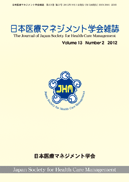Volume 13, Issue 3
Displaying 1-7 of 7 articles from this issue
- |<
- <
- 1
- >
- >|
Case Reports
-
Article type: Case Reports
2012Volume 13Issue 3 Pages 110-115
Published: December 01, 2012
Released on J-STAGE: September 11, 2020
Download PDF (1433K) -
Article type: Case Reports
2012Volume 13Issue 3 Pages 116-122
Published: December 01, 2012
Released on J-STAGE: September 11, 2020
Download PDF (2057K) -
Article type: Case Reports
2012Volume 13Issue 3 Pages 123-126
Published: December 01, 2012
Released on J-STAGE: September 11, 2020
Download PDF (495K) -
Article type: Case Reports
2012Volume 13Issue 3 Pages 127-133
Published: December 01, 2012
Released on J-STAGE: September 11, 2020
Download PDF (832K) -
Article type: Case Reports
2012Volume 13Issue 3 Pages 134-138
Published: December 01, 2012
Released on J-STAGE: September 11, 2020
Download PDF (674K) -
Article type: Case Reports
2012Volume 13Issue 3 Pages 139-144
Published: December 01, 2012
Released on J-STAGE: September 11, 2020
Download PDF (1878K) -
Article type: Case Reports
2012Volume 13Issue 3 Pages 145-150
Published: December 01, 2012
Released on J-STAGE: September 11, 2020
Download PDF (1323K)
- |<
- <
- 1
- >
- >|
